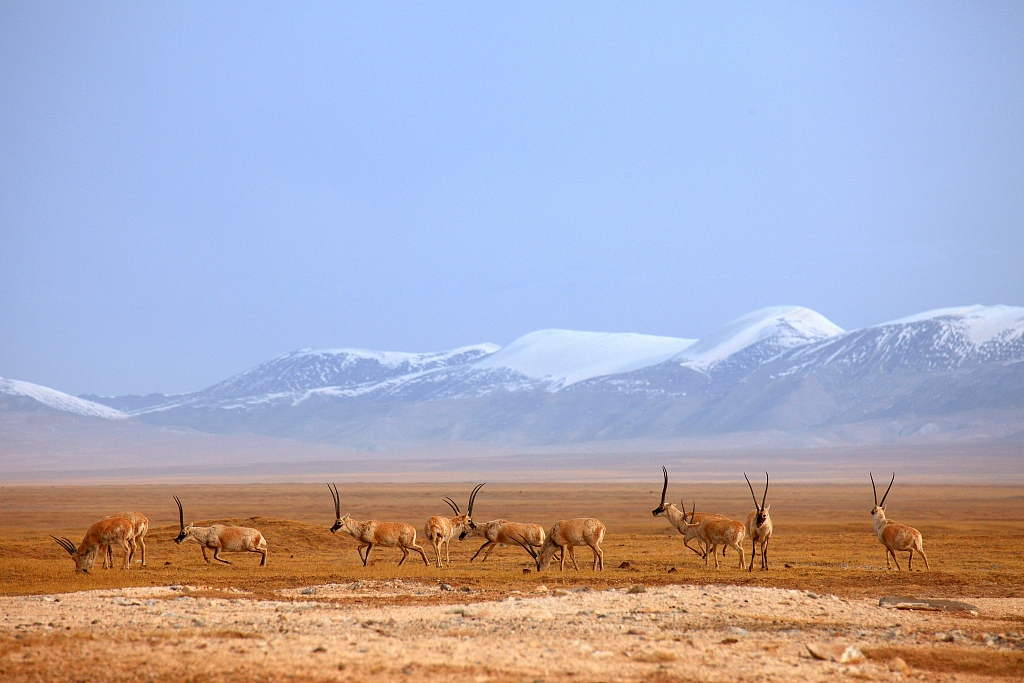Pregnant Tibetan antelopes have begun their annual migration to the heart of northwest China's Hoh Xil nature reserve to give birth, according to the statement released on Friday by the reserve's management bureau.
On April 30, the first group of 43 Tibetan antelopes passed the Qinghai-Tibet highway on the route to Zonag Lake and other breeding areas in Hoh Xil, about a week earlier than last year.
As of Thursday, more than 590 Tibetan antelopes had already crossed the highway on their journey towards their "delivery room."
Every year, tens of thousands of pregnant Tibetan antelopes start to migrate to Hoh Xil in May to give birth, after mating in November or December, and leave with their offspring in around August.

Tibetan antelopes roam on the plateau in northwest China. /VCG
Tibetan antelopes roam on the plateau in northwest China. /VCG
Under the first-class state protection in China, the once-endangered species is mostly found in Tibet Autonomous Region, Qinghai Province, and Xinjiang Uygur Autonomous Region.
The Tibetan antelope population drastically dropped from 200,000 to 20,000 due to illegal hunting in the 1980s. However, it has recovered thanks to the ban on illegal hunting and the measures put in place to improve its habitat.
In July 2017, Hoh Xil became a world heritage site and is home to about 60,000 Tibetan antelopes.
(Cover image via VCG)
(If you want to contribute and have specific expertise, please contact us at nature@cgtn.com.)
Source(s): Xinhua News Agency